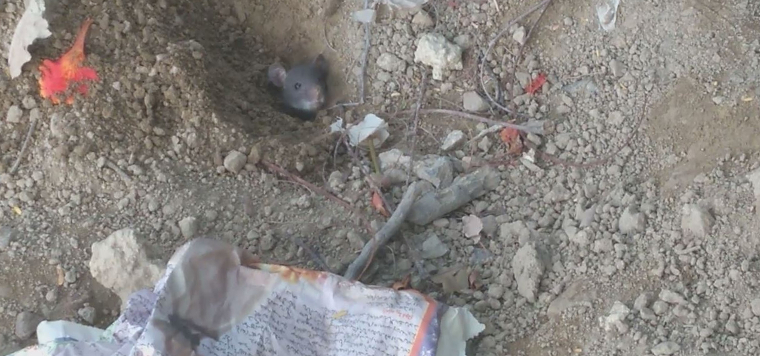-
info@aaanimalcontrol.com
Call us for help in your town
Humane Wildlife Education
Do rats dig holes?
Need rodent removal in your hometown? We service over 500 USA locations! Click here to hire us in your town and check prices- updated for year 2020.
Rats are very good at a number of things. They chew through almost every material that you could think of, including the ones that you probably used to stop them from gaining access to your home in the first place. They can also swim pretty well, adapting to new and water-filled habitats with ease, even going as far as treading water at the times that require it.

Rats can jump, up to a meter horizontally and almost as much as that vertically too. They can run fast, breed at an astronomical rate, and have learned to avoid traps that could potentially capture or kill them. It's safe to say that these creatures are like superheroes. Perhaps super-villains is a better term? Especially if you've ever experienced an infestation of the rodent in your residential or commercial building.
As if the average property owner didn't have enough to worry about, rats can also dig holes ... really well. In fact, many of them use underground burrows and dens as nests, shelter, and even storage for food. With powerful limbs and sharp claws, they have the potential to work their way through even the most packed earth and ground types with relative ease, excavating vast and intricate burrowing systems that can carry on for some distance.
You will usually find the opening of these underground burrows close to a building, such as a shed, other outbuilding, or even your home/commercial property. If the tunnel systems were to go far enough under the property, and with enough excavated material, the entire building on top of it could eventually become unstable, and that's even more so the case if you consider that other creatures will often use the abandoned burrows or underground lairs for their own families, in many cases making them bigger than they were to begin with. For the most part, the burrows themselves won't be any deeper than around eighteen inches, but the storage systems can fall much deeper than that if the rat is trying to get underneath a structure, such as a building.
How will you know that the hole you can see is a rat hole?
On dusty surfaces, you will see tiny little rat paw prints and you may even see the same thing if you look close enough on earthy surfaces too. Alongside the paw prints, you may even see tail marks — the tail will have dragged along the ground beneath the rodent.
As well as paw prints, you are very likely to see signs of rat feces. They deposit this and urine wherever they run, so wherever you will find rats, you will see this physical evidence too.
A rat hole will generally be around two to four inches in diameter. If the hole is a lot bigger than that, there's a good chance that a rat isn't the culprit. The rat will leave a fan-shaped portion of debris from the entrance of the hole, however, and this will caused by earth and other materials that have recently been excavated from the area.
You can use a small test to work out whether or not the hole is still being used. If you were to stuff that hole with a relatively soft material, such as scrunched-up paper, and then return in the morning, the state of the material you stuffed in there would tell you the status of a hole. If it has moved (and you can be sure that wind hasn't caused the movement), there's a good chance that the rats are still using that hole. If the material hasn't moved, the rats either don't use that hole at all, or very rarely. You shouldn't bother putting your traps in holes that are rarely used. They will rarely catch anything. It is wise to remember that many tunnels underground that rats use will have little “escape hatch” areas that they can easily use to get out of most situations.
Rats really could be one of the smartest creatures on the planet!
For more information, you may want to click on one of these guides that I wrote:
How much does rat removal cost? - get the lowdown on prices.
How to get rid of rats - my main rat removal info guide.
Example rat trapping photographs - get do-it-yourself ideas.
Rat job blog - learn from great examples of rat jobs I've done.
rats in the attic - the steps to get them out.
Rats in the walls - what to do to solve the problem.


















